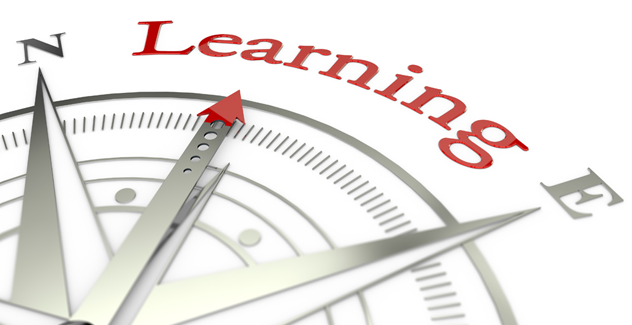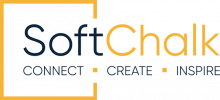
This is the fourth in a series of blog posts addressing key steps for creating high-quality online learning content. After discussing in the first post (Step 1: Discovering Good Content), the factors to consider in locating usable learning resources, we looked to the second (Step 2: Reusing and repurposing learning content) at the role that context plays in preparing content for student access. In the third post (Step 3: Making Content Pedagogically Effective), we considered approaches for making content pedagogically effective.
Instructional Design for Online Learning (Step Four): Assessing Learning Outcomes
Once a unit of learning content has been developed, teachers will want to make sure that it fulfills learning objectives in terms of student outcomes and curriculum goals.
There will likely be several different factors at play in the process of assessing learning outcomes. These considerations are as follows:
Are students actually accessing the content?
Embedding Google Analytics into your web pages provides data about how web pages are being accessed, as well as information about time and place of access, which might be of interest.
If using an LMS, teachers can turn on content tracking to assist in assessing learning outcomes. This helps to ascertain whether students are in fact viewing the content.
Are students interacting effectively with the content?
Assuming you have built in formative assessments into the content (comprehension questions, learning activities, etc.), you may be able to collect data on student performance, i.e. their scores on each item.
Within an LMS, you can have that data sent to the system gradebook by packaging the content as LTI compliant, a standard implemented by most LMS’s and some authoring tools.
Of course, you can also create assessments separate from the content presentation, done in class or online.
Are the students actually learning?
This is, of course, the most important question, and the one most difficult to answer.
In assessing learning outcomes, we can certainly look at the quantitative data collected from assessments, which provide individual and class performance data. If the nature of the content and the number of students allow, free-form assessments (short answer) or short essay questions can often provide more reliable and fine-grained performance measures.
Depending on the discipline and the nature of the content, there may be additional approaches to assessing learning outcomes. This may include the ability of students to use learned content in specific tasks or to integrate the knowledge gained in real-world, or simulated usage such as case studies or projects.
Does student performance fulfill programmatic objectives?
Evaluating patterns of performance across a range of assessed students can provide clues about the effectiveness of the learning content.
If the bulk of the students are having difficulty with a particular set of questions, that is an indicator that it may be worthwhile to take a fresh look at how particular content is presented, to see if revision or reworking may be advisable.
Strategies for Assessing Learning Outcomes
Many teachers are under external pressure to demonstrate that students are achieving learning outcomes. This is likely to necessitate forms of standardized testing, over which teachers have little choice or control.
Still, in the process leading up to the formal, summative assessments, teachers certainly want to have confidence that students are being prepared to be successful.
Assessing learning outcomes can be done by implementing some version of continuous assessment. The idea is that rather than using a series of high-pressure exams, assessment of student learning is done through an ongoing process, with formal assessment instruments being supplemented through other mechanisms.
This ongoing strategy for assessing learning outcomes can provide positive reinforcement for students, as the emphasis shifts from finding gaps in knowledge to demonstrating understanding—moving away from “can’t do” towards “can do”.
Here are some of the ways to think about implementing continuous assessment, in conjunction with delivering learning content digitally:
Frequent feedback
In online learning, one can provide multiple opportunities for self-assessment through the regular integration of tasks or questions.
In a multiple-page lesson, that might translate into inserting assessments or guided learning activities every few pages.
To help students be successful and retain learning, it can be helpful to allow students to retake individual assessment items. This shifts the primary focus from grades to learning.
Learner self-reflection
Many teachers these days – especially those using digital resources extensively in their teaching – have introduced reflective journals, learning logs, or personal blogs. These serve as a means for learners to engage in critical self-reflection on their learning, as well as to demonstrate how learned content is integrated into their previous knowledge or connects to their own lives.
This kind of reflective inquiry can be invaluable in assessing learning outcomes and following student progress. This may be time-consuming for teachers, as the value of journaling for learning is enhanced through students receiving regular supporting and guiding comments.
Student perceptions
It can be informative to conduct regular surveys of student perceptions of their learning and on the effectiveness of the learning materials provided. This can provide a quantitative set of data to complement or replace learning journals.
Learners as teachers
One of the approaches many have found effective is to assign students the task of designing ways to teach particular content.
Students will often have creative, student-friendly suggestions. Teaching is the best way to learn, but it’s also the best way for learners to show the depth of their understanding.
This kind of activity fosters students’ critical thinking and can build learner autonomy, as students gain insight into the learning process.
SoftChalk Cloud makes it easy to create online lessons that include formative assessments, frequent student feedback, and analytics reporting. Visit our SoftChalk Cloud Overview page for additional information.
In the fifth and final post (Step 5: Delivering Content Online), we discuss how to make the learning content available to students.
About Robert Godwin-Jones, Ph.D.: Robert Godwin-Jones, Ph.D., is a founding partner and responsible for product research and design. Prior to SoftChalk, Robert was a founding partner of madDuck Technologies where he was a co-developer of the Web Course in a Box Learning
Management System. He is the former Director of the Instructional Development Center at Virginia Commonwealth University and is currently a faculty member in their School of World Studies. His principal areas of research are in applied linguistics and international studies. He writes a regular column on emerging technologies for the peer-reviewed journal Language Learning & Technology (llt.msu.edu) and blogs on intercultural communication at http://acrossculturesweb.com/wp/.

Leave a Reply